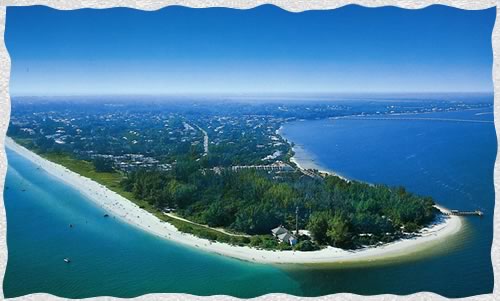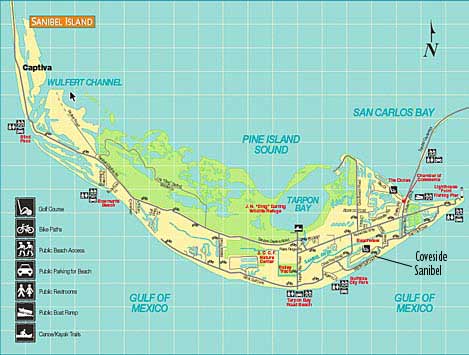 Urgency
Urgency 

"Sanibel Island Plan"
PROLOGUE
"How wonderful are Islands! Islands in space,
like this one I have come to,
ringed by miles of water . . .
An island from the world and the world’s life . . ."
Anne Morrow Lindbergh, Gift From the Sea.
Map of Sanibel
Documentary records at Univesity of Iowa
Paradise Island: Sanibel Island's 1976 plan put ecology first. (Article)
Thomson Gale, April 2007
This 1,166 word article is taken from the 01 April 2007 edition of Planning.
Abstract:
Sometimes the best things really do come in small packages. Consider Sanibel Island on Florida's West Coast: an 18-square-mile barrier island with a year-round population of just 6,300. Known worldwide for its shell-filled beaches, Sanibel attracts some 31,000 snowbirds every winter.
Last July, the island community marked the 30th anniversary of the groundbreaking Sanibel Plan, which is honored this year as a National Planning Landmark. The plan was a response by the newly incorporated city of Sanibel to fears that Lee County's zoning regulations, which would have permitted 30,000 dwelling units, could have a disastrous effect on the island. The city council declared a moratorium on all development until a comprehensive land-use plan could be developed by a team led by the Philadelphia firm of Wallace McHarg Roberts and Todd. (Sanibel's mayor at the time was Porter Goss, who until recently headed the Central Intelligence Agency.)
Simultaneously, the Conservation Foundation, the Sanibel-Captiva Conservation Foundation, and local environmentalists began a study of the island's natural systems (Captiva is an unincorporated island, connected to Sanibel by a short bridge). The "Sanibel Report" explained how a comprehensive land-...
 COPYRIGHT 2007 American Planning Association
COPYRIGHT 2007 American Planning Association
Article Information:
Published in: Planning
Issue Number: 4
Volume Number: 73
Date Published: 01 April 2007
Language: English
Word Count: 1166
December 19, 2006
Sanibel, Florida, Plan Receives 2007 National Planning Landmark Award
WASHINGTON, DC — Despite widespread growth throughout much of Florida during the past 30 years, the City of Sanibel adopted a comprehensive plan that allowed the community to find a balance between development and protection of its rich wildlife habitat and other natural resources. For its historic planning vision and commitment to implement that vision, the city's Sanibel Plan is receiving the American Planning Association's 2007 National Planning Landmark Award.
"The city's 1976 plan has not only allowed Sanibel to ensure development doesn't exceed the natural carrying capacity of the island," said APA Awards Jury Chair Carol Rhea, AICP, "but it also ensured that the city's infrastructure systems and hurricane evacuation routes would not be overtaxed by too many residents."
Officials representing the city and its nationally renowned plan will be recognized at APA's National Planning Conference during a special luncheon and awards ceremony Tuesday, April 17, 2007 in Philadelphia. In addition, the accomplishments of Sanibel and 13 other national awardees will be highlighted in the April issue of Planning magazine.
Faced with rampant growth plans by Lee County, citizens made a decisive decision in 1974 to form the City of Sanibel. From its nascent days, city leaders wrestled with concerns about hurricane evacuation, adequate infrastructure, and environmentally compatible growth. They understood the need for a scientific analysis of the island's ecological resources as well as for developing a comprehensive plan and implementation strategy.
"City leaders recognized their plan was only as strong as the commitment to put the plan into action," said Sanibel Planning Director Robert Duffy, AICP. "To do that successfully required long-term partnerships and sustained community support."
A visit to the island leaves no doubts about the benefits and positive outcomes that have occurred as a result of the plan. When the decision was made to create a plan for the city and island, nine ecological zones were identified and established. For each of these zones planners recommended appropriate land uses, intensity, and performance standards. For example, instead of keeping the island's preexisting zoning and development standards, which would have allowed about 30,000 residential units on Sanibel, the Plan recommended that the number be kept to 7,800. Subsequent changes to the plan led to 9,000 new units being built, a number that has not changed since 1989.
A corresponding Land Development Code included two other important goals: limit population levels to allow for safe hurricane evacuation over the island's two-lane causeway and assuring that the island's infrastructure would not be overburdened. Through the plan the city also established housing affordability and residential diversity policies. These measures and related financing components helped place Sanibel in the forefront of American cities recognizing the value of public- and private-entity partnerships to provide affordable housing.
For a list of all of the APA 2007 National Planning Excellence, Achievement, and Leadership Award recipients, visit
www.planning.org/newsreleases/2006/ftp121506.htm. APA's National Planning Awards, considered by U.S. planners to be the profession's highest honor, is a tradition established more than 50 years ago to recognize outstanding community plans, planning programs and initiatives, public education efforts, and individuals for their leadership on planning issues.
Contacts
Robert Duffy, AICP, Sanibel Department of Planning, 239-472-4136; robert.duffy@mysanibel.com
Denny Johnson, APA Public Affairs, 202-349-1006; djohnson@planning.org
Ian McHarg, Design with Nature
Cowan and Van der Ryn, Ecololgical Design
This page was created, by J. Siry.





